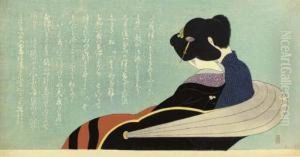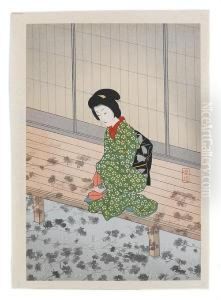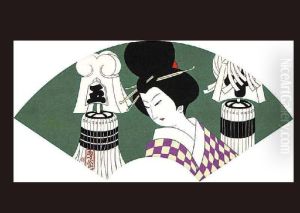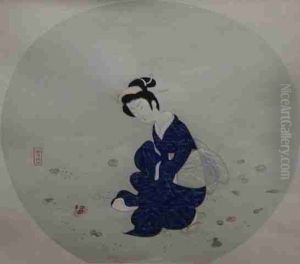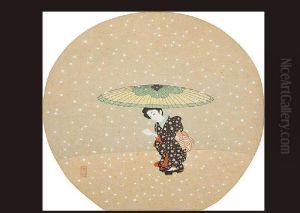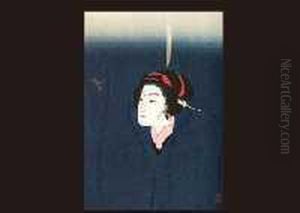Komura Settai Paintings
Komura Settai, born in 1887 in Tokyo, Japan, was a prominent figure in the early 20th-century Japanese art scene, especially known for his contributions to the shin-hanga movement and his work in book design, illustration, and stage design. Settai's artistic journey began at a young age, influenced by the rich cultural heritage of Japan and the burgeoning wave of Western art influences that were beginning to permeate Japanese society during the Meiji and Taisho periods. He initially studied under Kaburagi Kiyokata, a master of bijin-ga (pictures of beautiful women), but his artistic interests soon expanded beyond traditional subjects.
Settai's work is characterized by a unique blend of traditional Japanese aesthetics with elements of Art Nouveau and Art Deco, which were prevalent in the West during his lifetime. This fusion created a distinctive style that was both modern and deeply rooted in Japanese tradition. His illustrations often featured elegant figures, intricate patterns, and a subdued color palette, which lent his works a sophisticated and timeless quality.
Throughout his career, Komura Settai made significant contributions to the world of Japanese literature and theatre through his book designs and stage sets. He collaborated with many prominent writers and playwrights of his time, bringing their works to life with his exquisite illustrations and designs. Settai's work in book design was particularly influential, as he was instrumental in reviving the art of woodblock printing in Japan, which had seen a decline with the advent of Western printing techniques. His book covers and illustrations for Japanese literary classics and contemporary works are celebrated for their beauty and craftsmanship.
In addition to his work in illustration and design, Settai was also involved in the shin-hanga movement, which sought to revive traditional ukiyo-e woodblock printing techniques while incorporating Western styles and themes. Although not as widely recognized as some of his shin-hanga contemporaries, his contributions helped to redefine the genre for a modern audience.
Komura Settai passed away in 1940, leaving behind a legacy that continues to influence Japanese art and design. His work remains a testament to the cultural exchange between Japan and the West during a period of significant transformation and has been celebrated in numerous exhibitions both in Japan and internationally. Settai's ability to blend the old with the new, the Eastern with the Western, made him a pivotal figure in the evolution of early 20th-century Japanese art.
